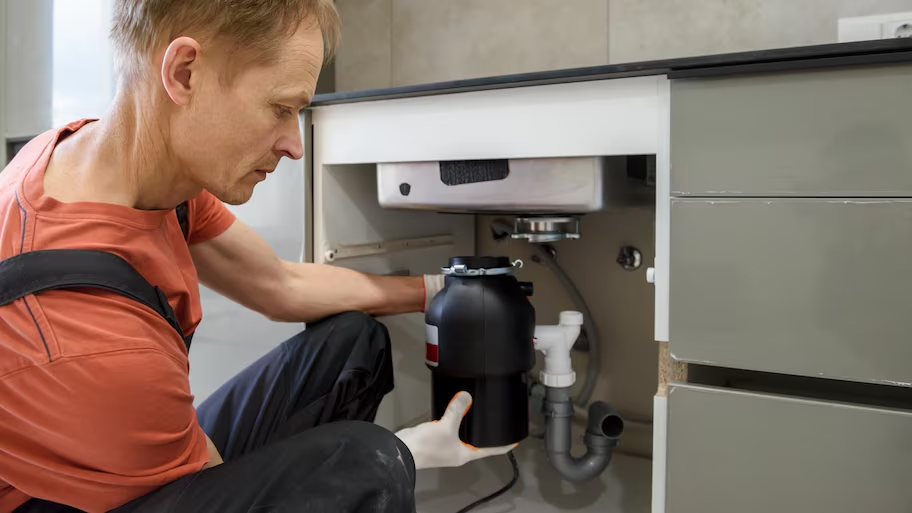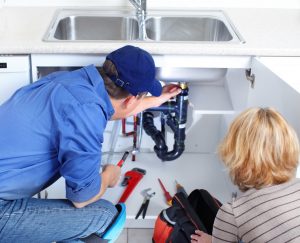Your Guide to Resolving a Leak in Your Garbage Disposal
Your Guide to Resolving a Leak in Your Garbage Disposal
Blog Article
Every person seems to have his or her own piece of advice in relation to Why Is My Garbage Disposal Leaking From the Bottom?.

Garbage disposals are essential kitchen area devices that assist in dealing with food waste successfully. Nonetheless, a leaking waste disposal unit can be an aggravating and untidy problem to handle. Luckily, several leaks can be taken care of conveniently with a few simple actions. In this write-up, we will go over just how to fix a leaking garbage disposal efficiently.
Intro
Waste disposal unit are mounted under kitchen sinks and are made to shred food waste right into smaller items, enabling it to go through the pipes system easily. While these devices are usually reputable, leakages can happen gradually due to wear and tear, loose links, or damage to the system.
Step-by-Step Overview to Dealing With a Leaking Waste Disposal Unit
Shut off the Power
Prior to trying any kind of repair work, make certain that the power to the garbage disposal system is switched off to prevent the risk of electric shock.
Locate the Leak
Identify the specific location of the leak and figure out the cause
Tighten Connections
Make use of a wrench to tighten up any kind of loose connections in between the disposal device and the pipes system.
Replace Seals or Gaskets
If the leak is due to worn seals or gaskets, eliminate the old parts and replace them with new ones.
Patching Splits or Openings
For splits or holes in the disposal system, use epoxy or an appropriate patching product to seal the broken area.
Recognizing the Source of the Leakage
Before attempting to take care of a leaking waste disposal unit, it is necessary to determine the resource of the leakage. This can commonly be done via aesthetic evaluation or by performing easy tests.
Visual Assessment
Examine the garbage disposal device carefully for any kind of indicators of water leak. Pay attention to areas around seals, gaskets, and link points.
Testing for Leakages
One means to check for leaks is by running water with the disposal system and checking for any kind of visible indicators of leakage.
Typical Root Causes Of Leakages in Waste Disposals
Worn Seals and Gaskets
Seals and gaskets play an essential function in avoiding water from dripping out of the waste disposal unit. Over time, these parts can deteriorate, leading to leaks around the disposal system.
Loose Connections
The connections between the waste disposal unit and the pipes system can come to be loose over time, triggering water to leak out during procedure.
Splits or Holes in the Disposal Unit
Physical damage to the waste disposal unit, such as splits or holes in the housing, can likewise cause leakages.
Devices and Materials Needed for Dealing With a Dripping Waste Disposal Unit
Before starting the repair work procedure, collect the needed tools and products, including a screwdriver, flexible wrench, plumbing's putty, substitute seals or gaskets, and epoxy or patching product for fixing cracks or holes.
Checking the Garbage Disposal After Fixing
Once the repair work is full, evaluate the waste disposal unit by running water with it to guarantee that the leak has actually been resolved.
Preventive Maintenance Tips to Prevent Future Leakages
To stop future leakages, it is vital to execute routine maintenance on your garbage disposal. This consists of maintaining it clean, avoiding putting non-food items or difficult things down the disposal, and periodically looking for leaks or various other issues.
Verdict
In conclusion, fixing a leaking garbage disposal is a reasonably straightforward process that can be completed with basic devices and materials. By complying with the actions described in this write-up and exercising preventive upkeep, you can keep your garbage disposal in good working problem and avoid expensive repair services in the future.
HOW TO REPAIR A LEAKING GARBAGE DISPOSAL
The first thing to do if your garbage disposal starts to leak or exhibits other symptoms of wear and tear is to inspect the appliance quickly. Before making any repairs, check for any obvious cracks or damaged parts and turn the disposal off at the power source. Once you have located the issue, several tools might assist you in solving it. Many resources are available to assist you in putting your disposal back in working order, whether by purchasing new parts or professional assistance from a repair technician. So immediately act if you need help with leaky garbage disposal. You can rapidly resolve the problem and enjoy smoothly functioning appliances with thorough troubleshooting and help from web resources.
Food waste is disposed of using a garbage disposal system, which grinds and flushes it down the toilet. A garbage disposal is a motorized device with one or more rotating blades that grinds up food waste into little bits. They are commonly found under the kitchen sink. A dishwasher inlet or connector is often built into garbage disposals, allowing extra water to drain into the sink’s dishwasher. Several things, such as clogs, worn-out components, or damage to the inside walls of the unit, can bring on garbage disposal leaks or other problems.
WHAT ARE SOME COMMON PROBLEMS WITH GARBAGE DISPOSALS?
Jamming: One of the most frequent issues with garbage disposals is jamming. It occurs when hard or fibrous materials, such as bones, potato peels, or fruit pits, get stuck in the disposal’s blades or impeller. It can prevent the unit from operating correctly or cause it to make unusual noises. Clogging: If too much food waste or non-food items are put into the disposal at once, it can lead to clogging. Clogged disposal may result in slow drainage or a complete backup of water in the sink. Grease and fats can also solidify inside the disposal and contribute to clogging. Leaks: Garbage disposals can develop leaks over time. The most common areas for leaks are the sink flange, the discharge pipe connections, or the dishwasher connection. Leaks can cause water damage and need to be addressed promptly. Foul odors: Food residue can build up in disposal over time and cause unpleasant odors. Bacteria and mold growth inside the unit can also contribute to foul smells. Dull blades: The grinding blades in the disposal can become dull over time, resulting in inefficient chopping and grinding of food waste. That may lead to more frequent jams and increased strain on the motor. HOW CAN YOU TELL IF YOUR GARBAGE DISPOSAL IS LEAKING?
Visible water: Check underneath the sink where the garbage disposal is installed. If you notice water pooling or dripping around the unit or any adjacent pipes, it’s a clear sign of a leak. Musty odor: A persistent or moldy smell from your kitchen sink area could indicate a hidden leak. The moisture from a leaking garbage disposal can create a damp environment that promotes mold and mildew growth. Water damage: Examine the area surrounding the garbage disposal for any signs of water damage. Look for water stains, discoloration, or warping on the cabinet floor or walls beneath the sink. Decreased performance: A leak in the garbage disposal can affect its functionality. If you notice that the disposal is not grinding food waste properly or is making unusual noises, it could be due to water damage or a leak compromising its mechanisms. Rust or corrosion: Inspect the garbage disposal for any signs of rust or corrosion. A leaking unit can cause metal components to deteriorate over time. Look for rust-colored stains or deterioration on the disposal unit or surrounding pipes. https://theappliancepeople.com/how-to-repair-a-leaking-garbage-disposal/

As an enthusiastic reader on Tips on Fixing a Leaking Garbage Disposal, I figured sharing that piece of content was sensible. Sharing is caring. You won't know, you may very well be helping someone out. Thank you for your time spent reading it.
Click Here Report this page